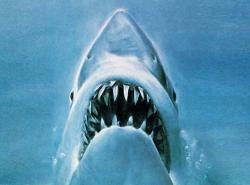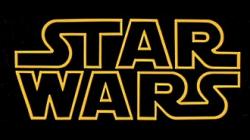Article
The Summer Blockbuster, Must See, Event Movie Phenomenon
Written by Scott
First Posted: May 30th, 2004

The mother of all modern summer blockbusters.
Ah, the lazy hazy days of summer are here at last. The children are out of school, the pools and beaches are open again, and you can practically smell the aroma of sun block wafting on the afternoon breeze. And while the temperatures rise outside, many of us will be rushing inside to air-conditioned theaters as the big-budget blockbusters begin to roll into multiplexes around the world. For the arrival of summer brings with it the onslaught of Hollywood Event Movies.
There was a time when summer was considered the off-season for movie releases. Following the Broadway Theater world’s lead, Hollywood saved its best releases for autumn and spring. Large grossing movies prior to the summer blockbuster like The Godfather and The Sound of Music were released in March. The Sting, Gone with the Wind, and The Exorcist all in December. It took a giant killer shark and a young director named Spielberg with a little movie called Jaws in 1975 to change that forever.
Jaws was released on June 20th, 1975 and became the first movie to break the coveted $100 million mark in box office earnings, thus setting the bar for all blockbusters to come. Even today, when $100 million is quite common, and the budget for the largest movies often exceeds that amount, it is still the base standard for what is used to describe a blockbuster. Although it wasn’t just the amount of money it earned that gives Jaws the distinction of being the first modern blockbuster. It was also its heavy promotion and wide release, appearing in all markets simultaneously rather than opening small and gradually moving into further markets.
Although Jaws was a breakout smash, Hollywood didn't change its release schedule overnight. The only true blockbuster of 1976 was Rocky, which was released in November. And even Spielberg’s follow-up film, Close Encounters of the Third Kind was released in the fall of 1977 rather than the summer.
It was the release of Star Wars in May 1977, that cemented the foundation that Jaws had laid. While over 67 million people saw Jaws in the theater, it didn’t have the same cultural effect as Star Wars, mainly due to George Lucas’s shrewd marketing techniques. You could not only see Star Wars in the theater, you could sleep under Star Wars sheets, play with Star Wars action figures, carry your lunch in a Star Wars lunchbox, and drink Pepsi out of a Star Wars glass at Burger King. With Star Wars, Lucas turned the Blockbuster into the Summer Event Movie.
Another seminal event in the history of the Summer Blockbuster occurred in 1978 when Jaws 2 became the very first Summer Blockbuster sequel to be released. Like most sequels to come, it was inferior to the original and earned less money, but despite this trend, sequels have remained a mainstay of the summer movie season ever since. By 1980, 3 of the summer’s biggest movies were sequels when The Empire Strikes Back, Superman 2, and Smokey and the Bandit 2, were all released.
Not only did Spielberg and Lucas co-invent the Summer Blockbuster Event movie, they truly owned it for the late 1970s and early 80s. In 1975 (Jaws), 1977 (Star Wars), 1980 (The Empire Strikes Back), 1981 (Raiders of the Lost Ark), 1982 (E.T.), and 1983 (The Return of the Jedi), either one, the other, or both could lay claim to having the top grossing film of the year. Although it would be ten years until either would claim it again, when Spielberg returned to the top spot with Jurassic Park in 1993.
Although the Summer Blockbuster was born in the seventies, it was the eighties that saw it come to maturity. The decade of excess didn’t stint on much, and that included its roster of movies, many of which now stand as pop culture classics. This was the decade that spawned such summer hits as Ghostbusters, Top Gun, Batman, Back to the Future, Who Framed Roger Rabbit, Aliens, Rocky II & III, Predator, Gremlins, Honey I Shrunk the Kids, Star Trek II, Die Hard, Star Wars: Episodes 5 & 6, E.T, and all three Indiana Jones’ movies. What began the decade as a fledgling experiment in the rearrangement of release dates, was now earning Hollywood the bulk of its profits.
The trend continued into the nineties and on up through today. If anything, the Hollywood summer has only grown longer, with studios no longer waiting for Memorial Day and the traditional start of summer. One of the most successful movies of all time, 2002’s Spider-man, opened on May 3rd. And the following year, X-men 2 did it again on May 2nd. And 2004 has already seen the release of Scooby-doo 2, Van Helsing, Shrek 2, and Troy. Spring has become the new summer.

The father of all modern summer blockbusters.
The autumn, which used to be the prime release time for big movies, has become the reserve of so-called Prestige pictures -- those that would be likely to win awards. One side effect of the summer blockbuster being that the division between 'popcorn' and 'arthouse' movies became more distinct. Whereas before Jaws, the highest grossing movies, like Gone With the Wind and The Godfather, had almost all won Oscars, it has become increasingly rare for the highest grossing movies to win any awards at all. There have been a few exceptions, such as Forrest Gump, Titanic, and The Return of the King, but of those three movies, only Forrest Gump was released during the summer.
Even if they do rarely win awards, its unlikely the trend for Summer Blockbusters will ever change. Four of the top five grossing films of all time were released in the summer, and during the 29 years since Jaws was released, the top movie of each year has been a summer release, 17 times. With that much money floating around, and with the bragging rights to having the year’s biggest film up for grabs, it’s a sure thing that studios will keep filling the theaters each summer with bigger and more expensive movies, each trying to out do the other. And so long as it does, moviegoers will happily take a few hours respite from the summer sun to enjoy them.
